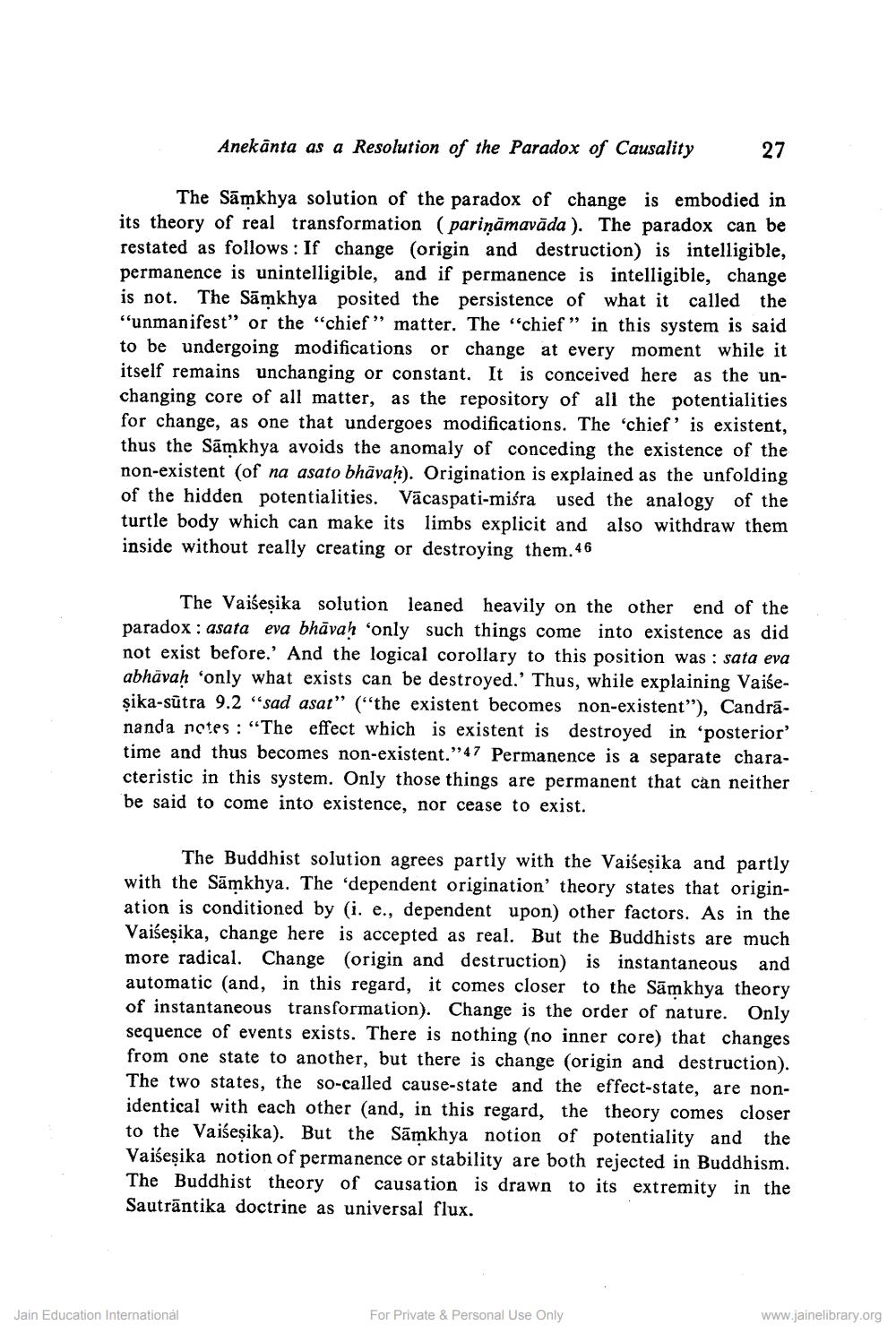________________
Anekanta as a Resolution of the Paradox of Causality
The Samkhya solution of the paradox of change is embodied in its theory of real transformation (pariņāmavāda). The paradox can be restated as follows: If change (origin and destruction) is intelligible, permanence is unintelligible, and if permanence is intelligible, change is not. The Samkhya posited the persistence of what it called the "unmanifest" or the "chief" matter. The "chief" in this system is said to be undergoing modifications or change at every moment while it itself remains unchanging or constant. It is conceived here as the unchanging core of all matter, as the repository of all the potentialities for change, as one that undergoes modifications. The 'chief' is existent, thus the Samkhya avoids the anomaly of conceding the existence of the non-existent (of na asato bhavaḥ). Origination is explained as the unfolding of the hidden potentialities. Vacaspati-miśra used the analogy of the turtle body which can make its limbs explicit and also withdraw them inside without really creating or destroying them.46
The Vaiseṣika solution leaned heavily on the other end of the paradox: asata eva bhavaḥ 'only such things come into existence as did not exist before.' And the logical corollary to this position was: sata eva abhävaḥ 'only what exists can be destroyed.' Thus, while explaining Vaiseşika-sutra 9.2 "sad asat" ("the existent becomes non-existent"), Candrananda notes: "The effect which is existent is destroyed in 'posterior' time and thus becomes non-existent."47 Permanence is a separate characteristic in this system. Only those things are permanent that can neither be said to come into existence, nor cease to exist.
27
and
The Buddhist solution agrees partly with the Vaiseṣika and partly with the Samkhya. The 'dependent origination' theory states that origination is conditioned by (i. e., dependent upon) other factors. As in the Vaiseṣika, change here is accepted as real. But the Buddhists are much more radical. Change (origin and destruction) is instantaneous automatic (and, in this regard, it comes closer to the Samkhya theory of instantaneous transformation). Change is the order of nature. Only sequence of events exists. There is nothing (no inner core) that changes from one state to another, but there is change (origin and destruction). The two states, the so-called cause-state and the effect-state, are nonidentical with each other (and, in this regard, the theory comes closer to the Vaiseṣika). But the Samkhya notion of potentiality and the Vaiśeşika notion of permanence or stability are both rejected in Buddhism. The Buddhist theory of causation is drawn to its extremity in the Sautrantika doctrine as universal flux.
Jain Education International
For Private & Personal Use Only
www.jainelibrary.org




